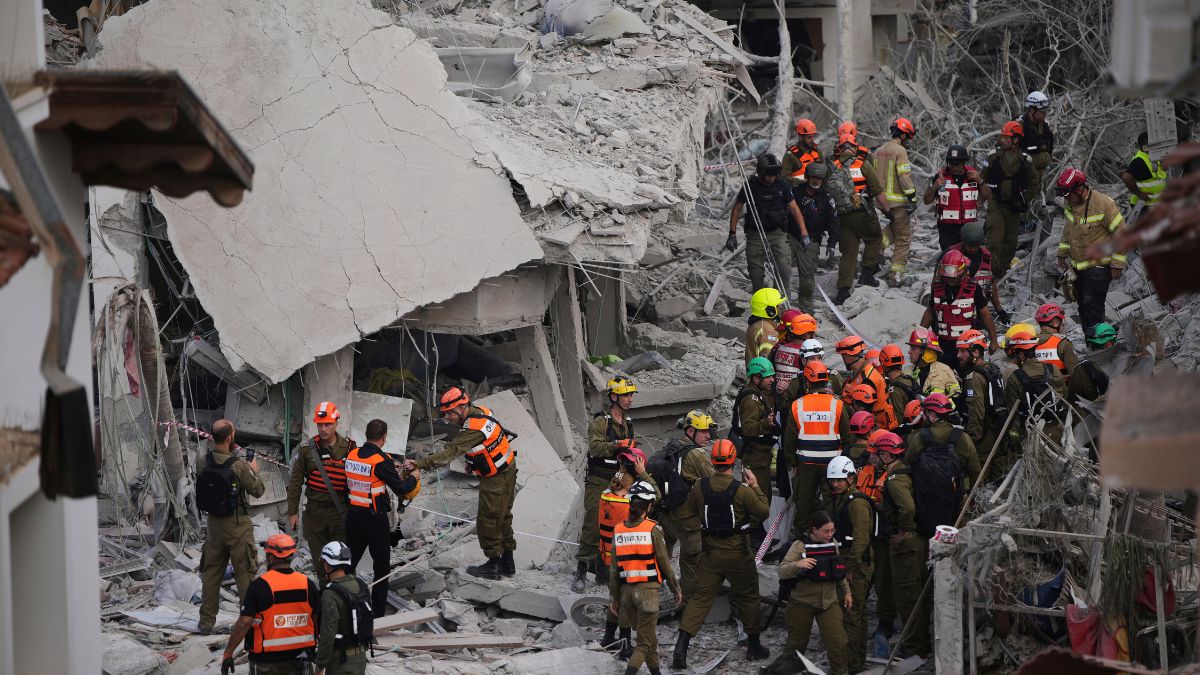Israel and Iran traded air strikes early Saturday (June 14), following Israel’s targeting of Iranian nuclear facilities and missile bases. Air raid sirens and explosions were heard over Jerusalem and Tel Aviv. Several explosions were also heard in Tehran.
The recent escalation between the two rivals comes after Israel on Friday struck Iran’s nuclear facilities, ballistic missile factories and military commanders, killing top Iranian military officials and nuclear experts. Iran vowed revenge, with its Supreme Leader, Ayatollah Ali Khamenei, warning that “severe punishment” would be inflicted on Israel.
As the story develops, here’s what we know so far.
1. Iran and Israel attacked each other with missiles and airstrikes early Saturday. Sounds of explosions were heard ringing in both countries. Tehran launched retaliatory strikes against Israel, targeting its commercial capital, Tel Aviv.
2. Smoke and blasts were reported in the Israeli city as air raid sirens sent people taking shelter. Reuters video showed a plume of smoke rising after a projectile hit the ground.
Iran launched two waves of long-range missiles at Israel, with sirens and explosions heard in Jerusalem and Tel Aviv early Saturday. “In the last hour, dozens of missiles have been launched at the state of Israel from Iran, some of which were intercepted,” the Israeli military said.
3. Iran said on Friday evening that it had fired “hundreds of various ballistic missiles” towards Israel, describing it as the “beginning” of its “crushing response.” “Moments ago, with the launch of hundreds of various ballistic missiles toward the occupied territories, the operation of decisive response to the savage attack of the Zionist regime has begun,” CNN reported, citing Iran’s official news agency, IRNA.
ALSO READ: Iran retaliates to Israeli attack: What are Tehran’s missile and nuclear capabilities?
4. Sirens sounded again before dawn in Israel, sending millions of people into shelters. “An additional barrage of missiles was launched toward the State of Israel,” the Israel Defense Forces (IDF) said in a statement.
5. One woman is confirmed to be dead and “some 40 people” were injured in the Iranian strikes, Israel’s ambassador to the United States told CNN. “We faced three salvos of ballistic missiles fired from Iran today, about 150 in total,” Yechiel Leiter said.
“We expect that the Iranians, who have a considerable volume of ballistic missiles, somewhere in the neighbourhood of 2,000, will continue to fire them,” he said, accusing Iran of targeting Israeli civilians.
6. Another person was reported to have been killed and over 20 others were injured after an Iranian rocket struck near homes in Rishon Lezion, just south of Tel Aviv, Israel’s emergency services said. Several people were trapped in the rubble as paramedics rushed to the scene. “This is a difficult and complex scene and we are still continuing to scan and ensure that there are no additional victims inside the buildings,” Rami Musher, deputy director of the Ayalon region’s emergency services, was quoted as saying by CNN.
7. After Iran’s barrage, Israel’s military claimed Tehran launched fewer than 100 missiles toward Israel and only landed a “few hits.” Iran’s Islamic Revolutionary Guard Corps (IRGC) said its missile strikes targeted Israeli military centres and air bases on Friday.
8. Addressing the Iranian people, Israeli Prime Minister Benjamin Netanyahu urged them to “stand up and let your voices be heard.” He said Israel’s fight is not against them but the Iranian government.
9. Several explosions were also heard in parts of the Iranian capital Tehran, with videos showing smoke rising over the city. Tehran’s air defence system is currently active after another wave of Israeli attacks, Iran’s semi-official Tasnim news agency and state-affiliated Fars news agency reported on early Saturday.
`10. Israel’s attacks on Iranian nuclear sites killed 78 people, including senior military officials, and wounded over 320, said Iran’s ambassador to the United Nations. However, the ambassador told the UN Security Council that “the overwhelming majority” of victims were civilians.
(This is a developing story)
With inputs from agencies


)

)
)
)
)
)
)
)
)



